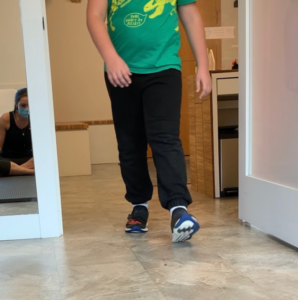What is a Concussion and What to do Next
A concussion is a Mild Traumatic Brain Injury that occurs with an impact or forceful movement to the head/body, causing a rapid motion of the brain in the skull. It can happen to children of any age as well as adults. Note: it’s not just blows to the head that can cause a concussion. Impact to the body can also transmit force to the neck and head, resulting in a concussion.
| If your child has had an injury and you suspect a concussion, take them to the emergency room immediately if any of the following symptoms occur: | What are the signs and symptoms of a concussion in children/teens?
Each person is different and may experience one, some or many of the below symptoms. These may vary from day to day or could be consistent. |
|
|
Emotional and Behavioural:
Physical symptoms:
|
Mental symptoms:
Sleep:
|
| *Only 10% of concussions cause a loss in consciousness so this is not a reliable sign*
**Signs and symptoms of a concussion can be delayed by several hours or even several days! When it comes to kids and sports – if you’re not sure if a concussion has occurred – it’s best to rest for 48 hours after a blow to the body/head before returning to play. “When in doubt, sit them out.” |
||
What are signs and symptoms of a concussion in toddlers and infants?
Infants and toddlers with a suspected concussion, or those experiencing behaviours that are abnormal/concerning for them, should seek immediate medical attention. An infant or toddler with a concussion can present with some or all of these symptoms:
- Crankiness/irritability that is not typical
- Cannot be comforted or crying excessively
- Changes in eating, sleeping or playing patterns
- Worsened balance/walking
- Decreased interest in toys/play
- Increased fatigue/tiring easily
- Decrease in skills (language, social, emotional or physical)
What to do if your child has a concussion
Immediately:
- Make them stop what they are doing
- Stay with them to monitor them
- Seek medical attention to be assessed
During the first 48 hours:
- Allow your child to rest for a maximum of 2 days. They will need physical and cognitive rest to help their brain heal.
- Limit screen time and avoid activities that increase/cause symptoms.
- Schedule an appointment with a paediatric, concussion-trained physiotherapist to get started on a recovery plan.
After 48 hours:
- Limit physical exertion to activities that do not increase your child’s heart rate too high/cause them to break a sweat.
- Examples of things to avoid: Work outs, sports, running, biking, rough play, etc.
- Cognitive activity should be slowly and gradually re-introduced as symptoms allow, including activities that require concentration and learning as well as exposure to loud noises.
How long do symptoms last?
- Most concussion symptoms resolve in 1-4 weeks. During this time we recommend that kids gradually return to school and sports with a return to play protocol, under the guidance of a trained professional.
- Returning to full activity/sports too soon may result in more severe symptoms or long term problems. It can also put your child at risk of sustaining another concussion with more severe symptoms and a longer recovery period.
How do you treat a concussion?
Physiotherapy can help to assess and address concussion symptoms. Treatment can involve:
- Neck dysfunction/whiplash
- Vestibular system – dizziness and nausea symptoms
- Visual symptoms
- Graded and monitored return to school and work with communication to teachers, coaches and more
- Education on symptom management and how to successfully return to school and sports.
- Comparing where your child is at to their Concussion Baseline Test, if they have one, and ensuring they get back fully to their baseline levels.
What’s different about Playworks Physio Concussion Treatment?
At PlayWorks Physio, our therapists have up to date concussion training and we individualize each patient’s treatment to their specific concerns and symptoms. We take the time to find out what your child’s interests are and use games and play to motivate them with their exercises! From high level athletes to toddlers, each child’s plan is catered to their level.
Have a child with a suspected concussion? Click here to book an appointment or call us to see how we can help to identify if a concussion is present and provide treatment as necessary – 604-492-3888.
Written by: Kate Heays & Lindsay Eriksson






